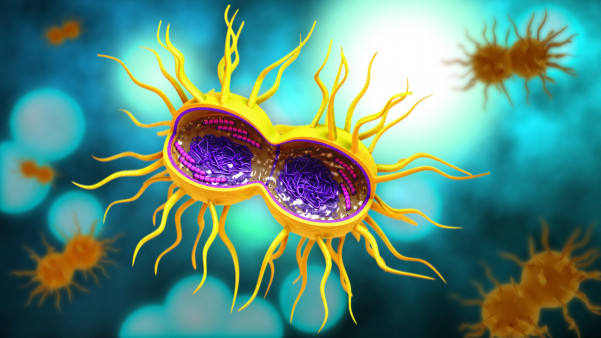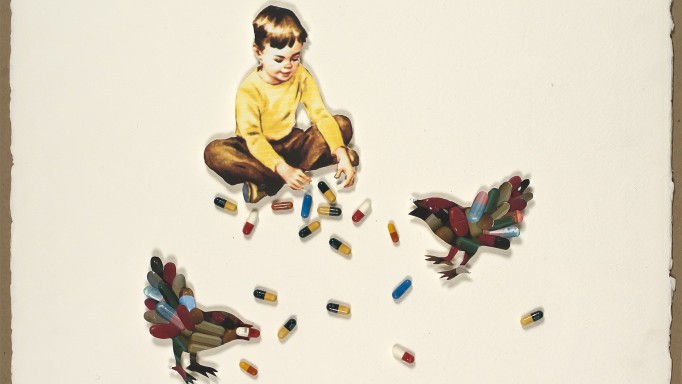Gonorrhea is a sexually transmitted infection (STI) caused by Neisseria gonorrhoeae bacteria. It can be treated with antibiotics, but drug resistance is a growing concern. If left untreated, gonorrhea can lead to serious complications, including chronic pain and infertility. What’s more, the STI increases the likelihood of acquiring or transmitting HIV.
Who is at risk for gonorrhea?
Gonorrhea is the second most common bacterial STI in the United States (after chlamydia), and case numbers have doubled over the past decade. Nearly 700,000 cases were reported to the Centers for Disease Control and Prevention (CDC) in 2021, but many infections remain undiagnosed. Gonorrhea rates are rising for both men and women and for most racial and ethnic groups. Young people ages 15 to 24 account for more than half of reported cases, and men who have sex with men account for around one third.
How is gonorrhea transmitted?
Gonorrhea is transmitted through sexual contact, including vaginal, anal and oral sex and sharing sex toys. The bacteria are present in vaginal fluid, semen and pre-cum, so transmission can occur without ejaculation. Pregnant people with gonorrhea can pass it on to their babies during delivery. Gonorrhea is not transmitted through hugging or kissing or contact with objects such as toilet seats or eating utensils.
How can gonorrhea be prevented?
Avoid having sex if you have symptoms that could indicate an STI. If diagnosed with gonorrhea, inform sex partners and hold off on sex until treatment is completed. Condoms offer good protection against gonorrhea by preventing genital fluids from coming in contact with another person’s mucous membranes.
Recent research shows that taking the antibiotic doxycycline as post-exposure prophylaxis after sex—known as doxy PEP—reduces the risk of gonorrhea for gay men and transgender women, but this did not work for cisgender women. In addition, a vaccine that prevents meningitis caused by related bacteria can also prevent gonorrhea. (See Research Notes, page 15). Because infants can be exposed to gonorrhea during delivery, experts recommend that all newborns receive an antibiotic ointment to prevent eye infection.
What are the symptoms of gonorrhea?
Many people with gonorrhea have no symptoms. If symptoms do occur, typically within two weeks after infection, they may include white or yellow discharge from the penis or vagina and pain or burning when urinating. Symptoms often resemble those of other vaginal or urinary tract infections. Symptoms of rectal infection may include discharge, anal itching, bleeding and painful bowel movements. Oral infection can cause a sore throat, swollen glands and difficulty swallowing. Gonorrhea may also affect the eyes, joints, heart and brain. Babies exposed to gonorrhea during delivery are at risk for blindness, joint infection, meningitis and sepsis (blood infection).
Gonorrhea complications in men include epididymitis (inflammation of the tubes behind the testicles that store sperm), characterized by pain or swelling in the scrotum, and prostate inflammation. If left untreated, women with gonorrhea can develop pelvic inflammatory disease, or infection of the reproductive organs. Symptoms may include fever, pain in the lower abdomen, pain or bleeding during sex and vaginal bleeding between menstrual periods. Over time, scar tissue forms around the uterus and fallopian tubes, which can lead to chronic pain, infertility and ectopic pregnancy.
Gonorrhea and HIV
HIV-positive people with gonorrhea are more likely to transmit HIV, and HIV-negative people are more likely to acquire the virus. People with gonorrhea or other STIs should be tested for HIV if they don’t know their status. People living with HIV, especially those with a low CD4 count, may develop more severe gonorrhea complications.
How is gonorrhea diagnosed?
Because gonorrhea can resemble other conditions, testing is necessary to make a definitive diagnosis. Get tested if you have symptoms that could indicate gonorrhea or if a sex partner has symptoms or tests positive. Gonorrhea is usually diagnosed with a urine test or using a swab to take a sample of fluid from the penis, vagina, cervix, anus or throat. It is common to test for chlamydia at the same time. Home STI tests, which involve mailing a sample to a lab for analysis, are available.
The CDC recommends regular testing for gonorrhea and other STIs—even if asymptomatic—for sexually active men who have sex with men, people living with HIV and those using pre-exposure prophylaxis (PrEP). Gay and bisexual who are at increased risk (for example, those with new or multiple sex partners) should be tested every three to six months. Annual testing is recommended for sexually active women younger than 25 and for older women at increased risk. Testing is also recommended during pregnancy. Screening recommendations for transgender and gender diverse individuals should be adapted based on their anatomy. People who have a sex partner diagnosed with gonorrhea may be treated preemptively before getting test results back.
How is gonorrhea treated?
Gonorrhea can be treated with antibiotics, but it is becoming increasingly resistant to medications that used to be standard treatment. For most people, the CDC now recommends a single 500 milligram injection of ceftriaxone, but ceftriaxone-resistant gonorrhea is becoming more common. Alternative regimens are available for people who cannot use ceftriaxone—for example, a gentamicin shot plus azithromycin pills. A new type of antibiotic, zoliflodacin, was shown to be safe and effective in a late-stage clinical trial.
People should be re-evaluated if symptoms continue for more than a few days after starting treatment. Avoid having sex until treatment is completed and symptoms resolve. Sex partners are often treated at the same time so that they don’t pass the infection back and forth. Although gonorrhea can be cured, treatment will not reverse existing damage to reproductive organs. Gonorrhea does not confer lasting immunity, so it’s possible to get infected again.
Gonorrhea treatment is becoming more difficult as the armamentarium of effective antibiotics shrinks. Even if symptoms improve, it’s important to take the full course of medication, as this will help prevent resistance and ensure that gonorrhea remains curable.
Last Reviewed: November 17, 2023














